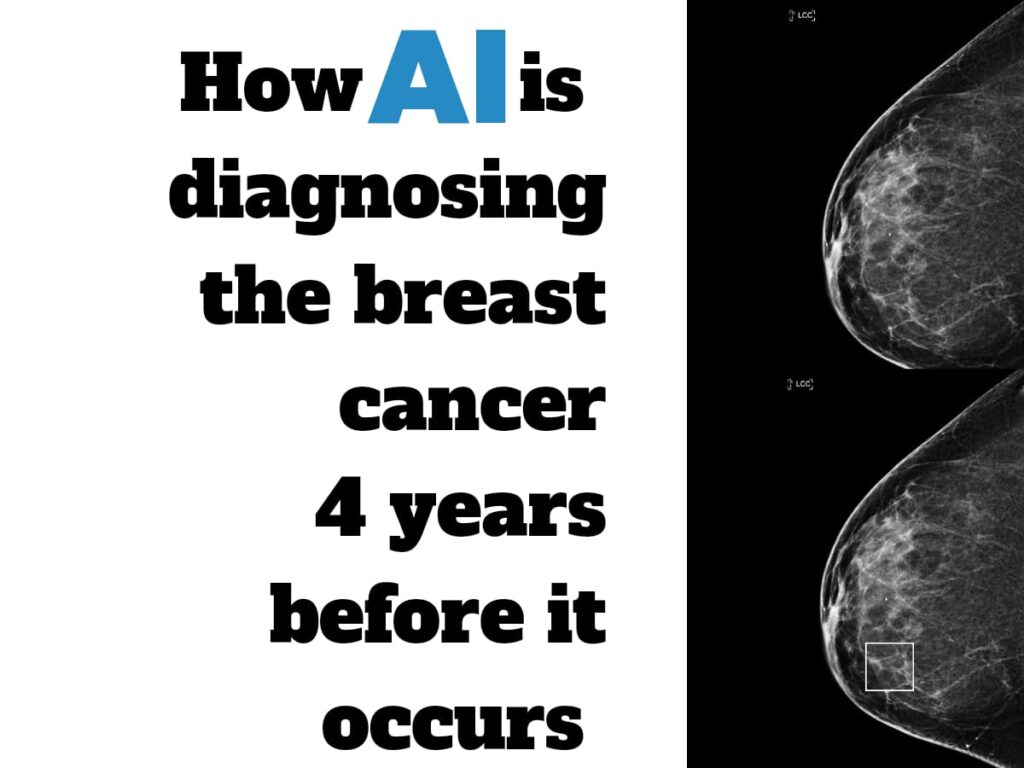Introduction
It is the most common cancer affecting women worldwide. When breast cells start growing and take the form of tumor then we name it as breast cancer. Breast cancer can develop in the milk ducts, lobules, or connective tissue. Very rarely it happens that breast cancer can also happen to men.

It is one of the most common type of cancer found in women around the world . It is all about early detection and making a better treatment plan game , where if the lesion which occurs many time before the actual cancer and its symptoms.
Screening
Screening of this cancer is the key component of managing it because it is all about early detection which is very important to treat the lesion on time. So enhancing the screening in high risk areas , These are the secondary prevention practiced to control it.

The artificial Intelligence working in detection of lesions of breast cancer works on a system known as Computer-aid Detection/Diagnosis (CADe/CADx) system. It learns from the image data and finalizes the result with the given algorithms and with the pre learning data.
This AI based screening, detection and diagnosis is an emerging field which deals with a limited number of patients and have some loopholes which should be filled before it comes in market for each and every one. The AI tumor lesion detection is even under trials and limited to less number of patient.
Watch this short videoto know about this topic : https://youtube.com/shorts/TXkuxefkyb0?feature=share
Researches
In the year 2020 some researches stated that breast cancer is the most common cancer worldwide affecting a large number of female population. Incidence of breast cancer is highest and the mortality rate by breast cancer is second highest in the world.

Concepts of prevention and treatment of breast cancer made it people to understand the breast cancer as a chronic disease and making some management strategies with a thinking that this cancer is non treatable. They follow these management strategies after the diagnosis.
Role of AI
Earlier when the imaging technology was used primarily for the detection of breast cancer than there was two main problems from which first problem was the number of images during imaging of breast cancer increases the load of radiologist and increases the chance of inaccuracy. The second big problem was the quality of images which can be distorted after procedure and can decrease the accuracy of the diagnosis.

Here comes the role of CAD (Computer aid Diagnosis) which provides hundred percent accurate data with proper imaging and clinical information based on the machine learning. It automatically recognizes the lesions, segmentations and studies all about the captured image and match it with its data and than finally giving the result.
A Beginner’s Guide to Understanding Multiple Sclerosis better !
How it Works
There are set of input data which we give to the Artificial Intelligence like mammographic data and images, Breast ultra sound, Breast MRI, Computed Tomography and PET/ CT PET / MRI reports. AI process these data with the pre existing data and confirms many results which are useful in clinical applications.

These applications involve breast cancer screening, diagnosis, staging, precision treatment, follow up, Drug discovery and prognosis. These data are enough to treat and detect the cancer and tumor lesions before they actually show their symptoms.
The future is all AI because of the human errors in diagnosing and screening of this condition .The main important part of this condition is the timely screening, which will surely help in treatment of breast cancer.
If we talk for now, AI is only 1 or hardly 2 percent evolved, which is making this much difference in our lives and health, think of the day when AI will evolve to 50 or 60 percent !
